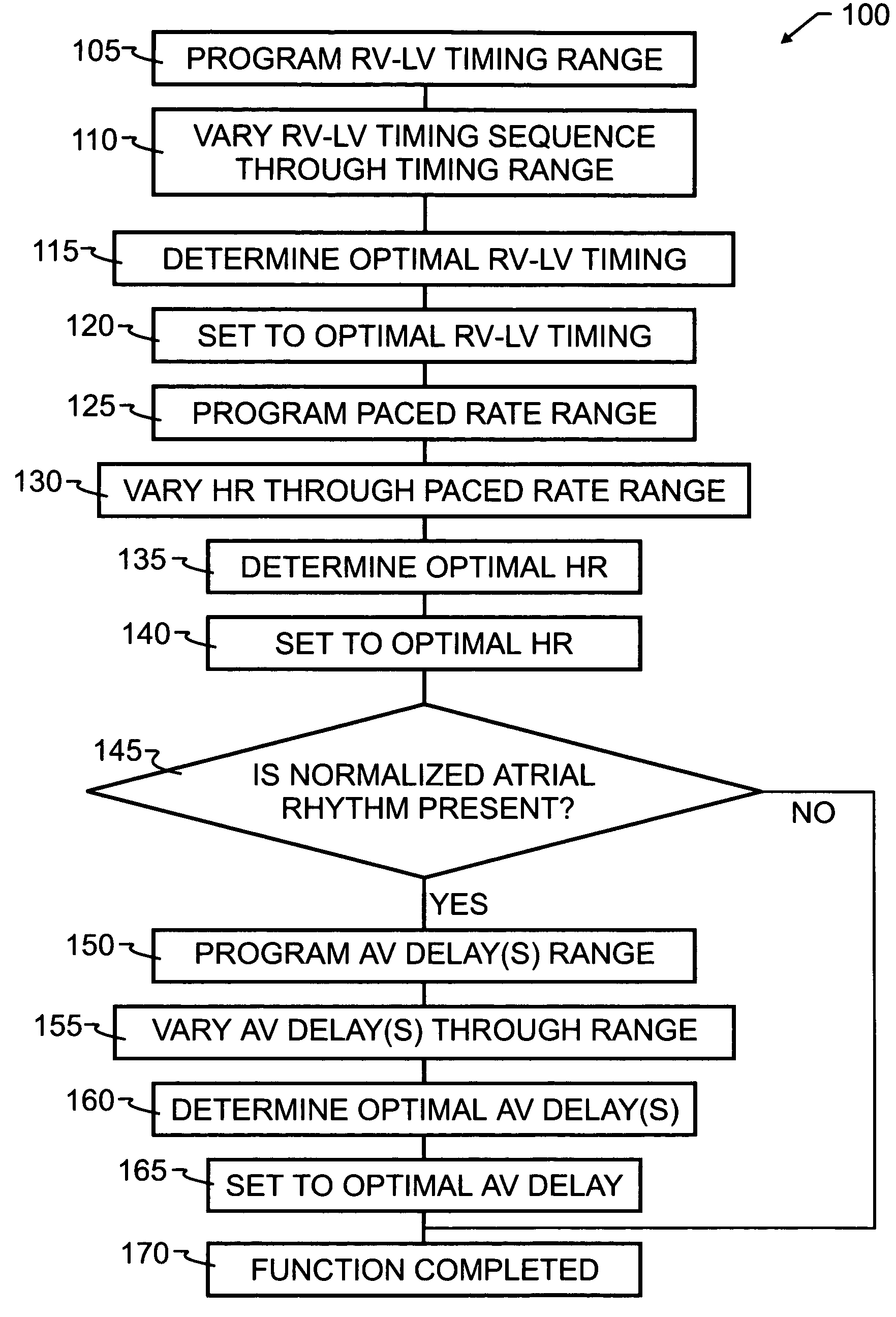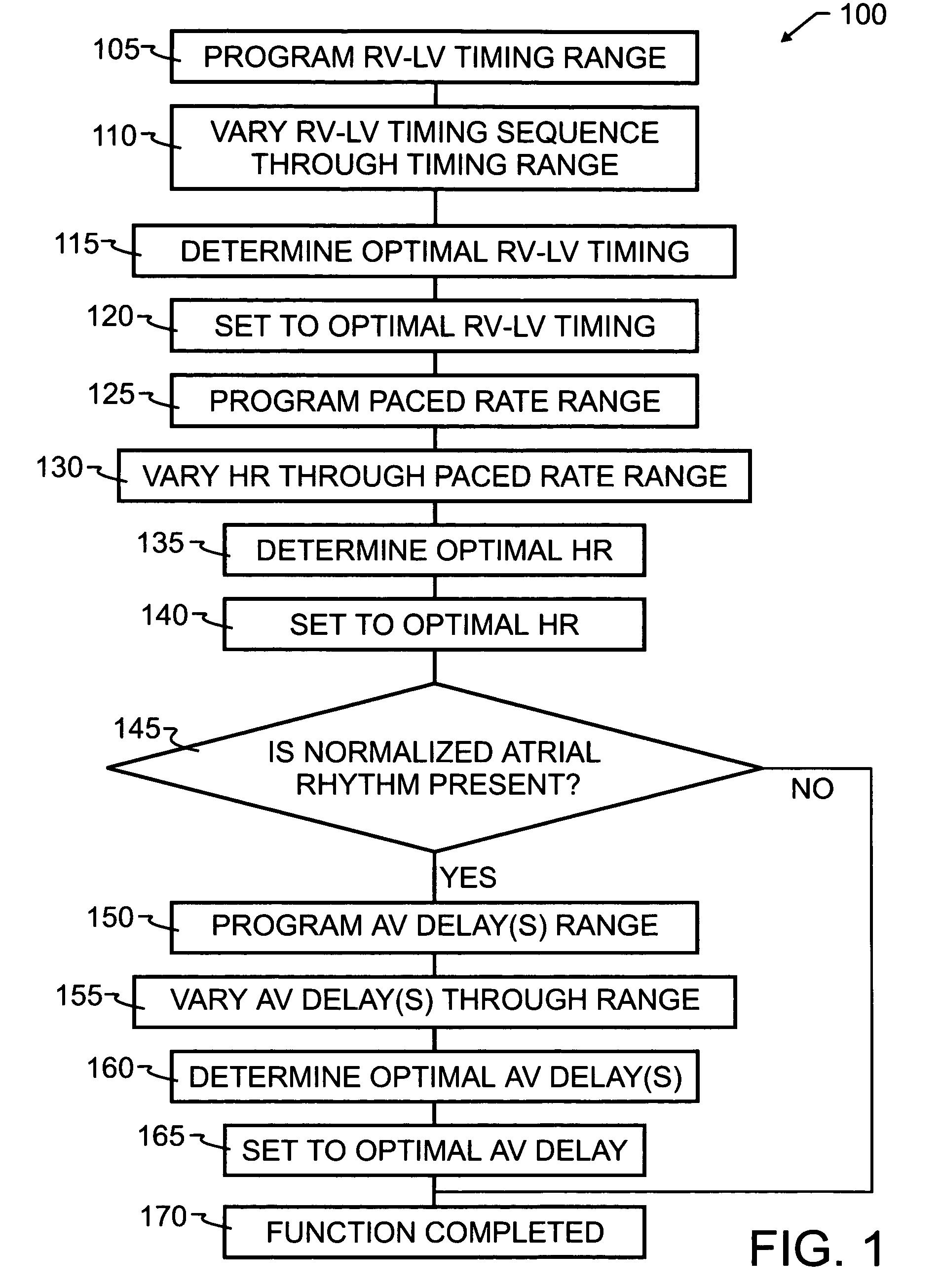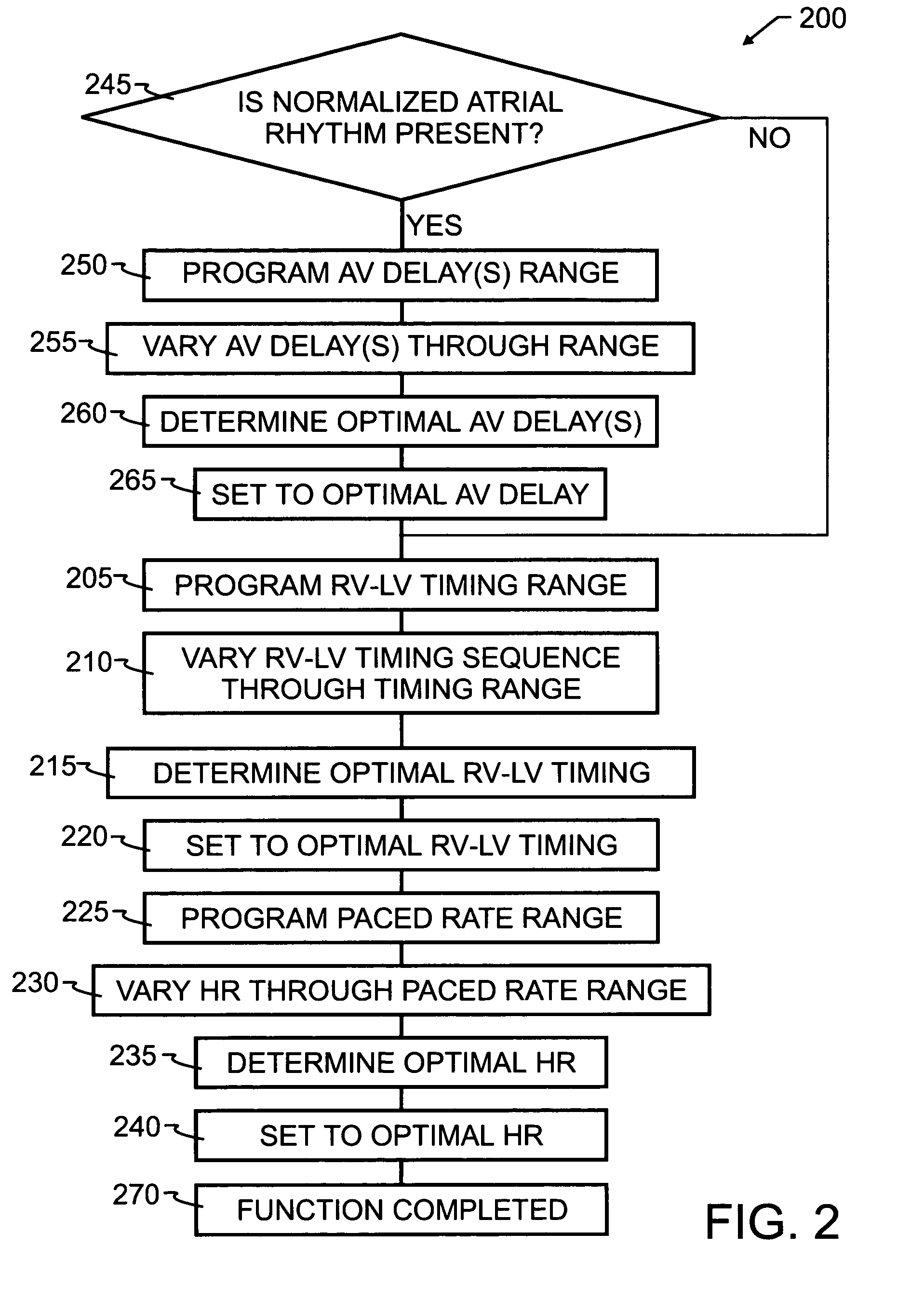Hemodynamic optimization system for biventricular implants
a technology of hemodynamic optimization and biventricular implants, applied in the field of biventricular implants, can solve the problems of inability to achieve functions that would otherwise be impossible or practicable, inflict pain and waste energy, and reduce mortality, improve overall quality of life, and alleviate symptoms.
- Summary
- Abstract
- Description
- Claims
- Application Information
AI Technical Summary
Benefits of technology
Problems solved by technology
Method used
Image
Examples
Embodiment Construction
[0041]As has been recited in the prior art and herein above, one of the more significant obstacles in the design and implementation of biventricular pacing devices has been the selection and control of optimum pacing delays. These delays are known to vary by patient, and in some instances, by patient position and activity. The preferred embodiment method 100 of the present invention, illustrated by flowchart in FIG. 1, overcomes the limitations of the prior art by implementing a feedback loop in a biventricular implant, in order to automatically or selectively optimize both the atrioventricular delay and the RV-LV timing sequence.
[0042]In order to optimize the patient's clinical hemodynamic status, the biventricular implant will be programmed in accord with method 100 to go through a series of AV delay and RV-LV timing and heart rates sequences which scan the range of programmable values and apply those values to the patient's heart. Hemodynamic patient measurements will be recorded...
PUM
 Login to View More
Login to View More Abstract
Description
Claims
Application Information
 Login to View More
Login to View More - R&D
- Intellectual Property
- Life Sciences
- Materials
- Tech Scout
- Unparalleled Data Quality
- Higher Quality Content
- 60% Fewer Hallucinations
Browse by: Latest US Patents, China's latest patents, Technical Efficacy Thesaurus, Application Domain, Technology Topic, Popular Technical Reports.
© 2025 PatSnap. All rights reserved.Legal|Privacy policy|Modern Slavery Act Transparency Statement|Sitemap|About US| Contact US: help@patsnap.com



